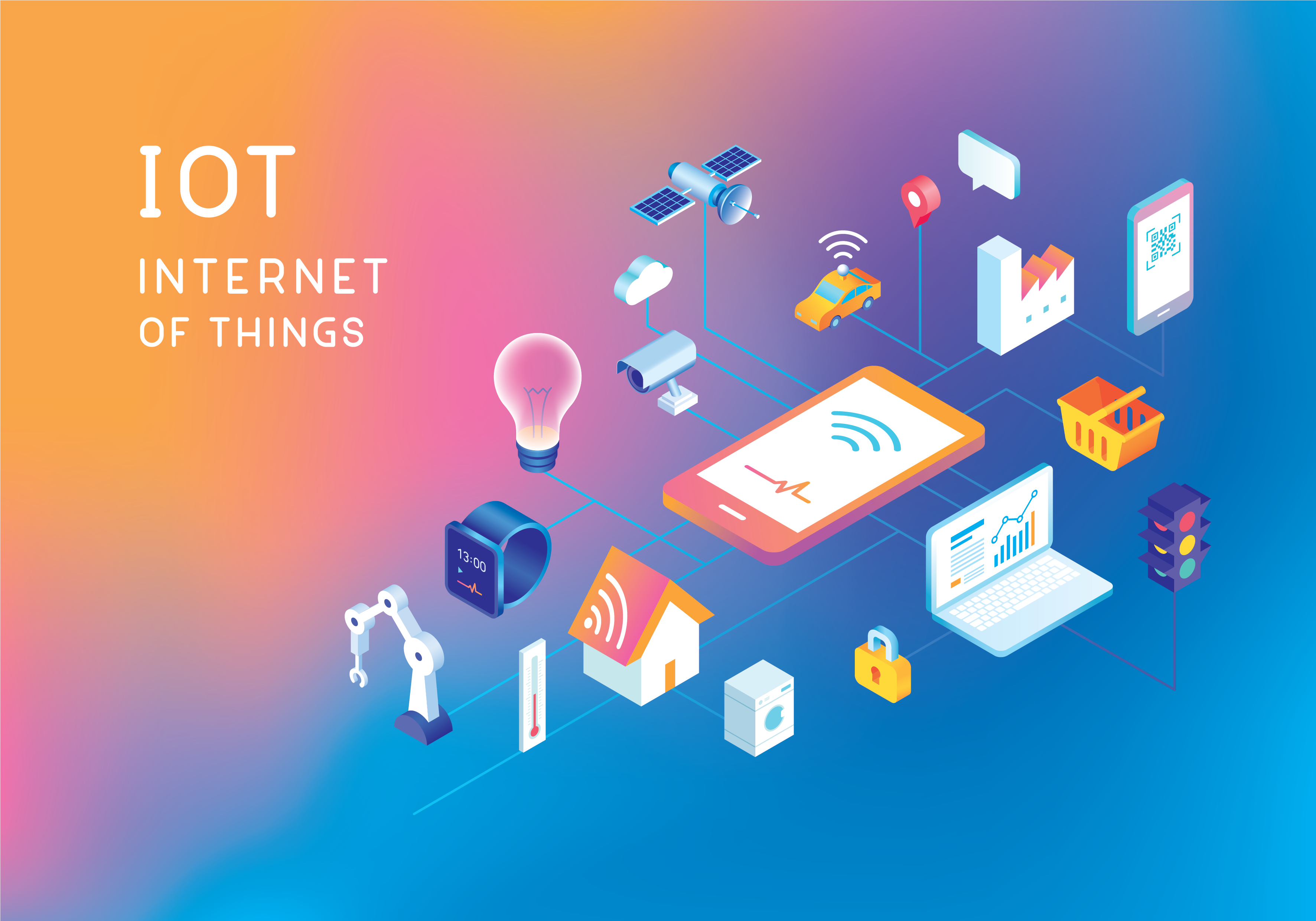The Internet of Things (IoT) is ushering in an era of sweeping change across industries. From smart appliances in the home that control everything from lighting to temperature to ordering groceries, to healthcare devices that allow physicians to monitor patients remotely, to smart cities that use IoT sensors to manage traffic, street lamps and trash pickup — today’s IoT applications are just scratching the surface of the technology’s potential.
While the use of internet-connected devices promises to bring greater efficiency and convenience to consumers’ everyday lives, the potential value for businesses resides in the data that IoT devices and sensors generate. The ability to instantly send and receive massive amounts of data can provide organizations with insights to drive customer expectations, improve operational efficiencies and enhance product innovation.
Gartner has estimated that there will be 25 billion internet-connected things by 2021. Not surprisingly, companies are eager to tap into this vast data stream. Most, however, are as yet ill-equipped for doing business in a hyper-connected world. To prepare for the data-driven IoT environment, organizations will be forced to rethink existing policies and processes for data management, information security, service delivery and support operations. The contact center, as the human touchpoint between customers and organizations, is uniquely positioned to deliver value in each of these areas.
Managing IoT Data Requires Investment in People and Ai
Deriving value from the massive amounts of real-time data that IoT sensors and devices produce requires an investment in artificial intelligence (Ai) and machine learning technology to help track, sort and categorize the data. A more pressing need is finding and retaining the analytical talent needed to extract actionable insights from the data. This has become an Ai deployment pain point for most organizations.
There is currently a critical shortage of data analysts, which is growing more severe as organizations forge ahead with Ai deployments. According to Gartner, the number of enterprises implementing Ai increased by 270% in the past four years and tripled in 2018. While the lack of data analysts isn’t preventing companies from deploying Ai, it is no doubt hindering their ability to manage, analyze and glean value from big data. In fact, 54% of IT and business leaders view the Ai skills shortage as the biggest challenge facing their organization, according to a Gartner Research Circle Survey.
Forrester has predicted that new contact center jobs will be created to help fill the skills void. This will include positions such as data scientists, automation specialists and application developers to work on customer self-service and agent support automation and Ai initiatives.
Similarly, Gartner’s research shows that more organizations are looking within to cultivate the analytical skills required. For instance, one approach is to identify internal “data generalists” — candidates who have no formal training, but who have industry knowledge, who understand the business and who have a knack for analytics. It’s a career path that is particularly appealing to younger tech-savvy employees. Other companies are revising the role by creating positions to take on the data management tasks that require less advanced analytical skills.
Companies need to be creative to bridge the skills gap. Gartner recommends providing training for employees who have backgrounds in statistics and data management or developing a job-sharing arrangement with business partners or with other companies within the product ecosystem.
IoT Devices Demand Human, Proactive and Personalized Customer Support
As IoT devices continue to proliferate at breakneck speed, so too do device setup and interoperability issues for consumers — along with frustration and dissatisfaction with the experience. Companies that hope to succeed in the consumer IoT market will need to redefine customer service models and protocols to deliver the type of seamless experience to which customers have become accustomed.
Consumer surveys have identified a general lack of knowledge when it comes to IoT device setup, device features and where to get support. While consumers expect a simple setup experience out of the box, they often run into difficulties connecting a new product to the other devices that they own. Troubleshooting the problem then becomes a drawn-out experience requiring multiple calls to different product manufacturers. Eventually, the consumer either finds a resolution or gives up and returns the product.
For IoT brands, providing a one-contact support experience will be a key differentiator for retaining consumers in a competitive market. Doing so will require contact centers to elevate the frontline customer service agent’s position from one that is transaction-oriented to a more consultative role that calls for critical-thinking and problem-solving skills to resolve issues across the IoT product ecosystem and not just for a single point product. The ability to respond to customers with empathy and discretion is also important when supporting devices in the healthcare or financial services markets since agents may need to access or be exposed to highly sensitive information.
The contact center can help to build customer loyalty and retention while reducing repeat calls by making customer education part of the support interaction. In addition to providing routine troubleshooting information, agents can help customers to get the most value out of their devices by instructing them on how to use specific features and add-on products.
As customer interactions grow increasingly complex, agent performance metrics will need to reflect changes in the way support is delivered; for instance, placing less emphasis on efficiency-oriented KPIs like average handle time and number of calls handled, and focusing more on outcome metrics like customer satisfaction and Net Promoter Scores.
Rapid IoT Growth Tests Data Security Protocols and Customer Trust
Consumer demand for connected devices is high and rising quickly. But in the rush to deliver IoT products to the market, security often becomes an afterthought. The risk is high: IoT attacks increased by 600% between 2016 and 2017, according to Symantec. Cybercriminals increasingly target IoT devices because they’re easier to hack than computers or smartphones. Adding to the danger, consumers often are unaware that their devices are connected. The more devices they have, the higher their vulnerability as each one offers an entry point for hackers.
The competitiveness of the IoT landscape leaves companies with little room to stumble when it comes to customer privacy and data security. Widely publicized data breaches and trust violations have diminished consumer confidence in organizations’ ability to manage and protect sensitive personal information. Consumers, for the most part, are no longer willing to trade sensitive personal information for convenience. They want to know what information companies are collecting, how they’re using it and what they’re doing to protect it.
New regulations like the General Data Protection Act (GDPR) and California Consumer Privacy Act (CCPA) require organizations to be more transparent about their data use and data security practices. To build consumer trust, IoT contact centers can play a vital role by:
- Proactively informing customers about privacy and data security protocols during the onboarding process and during customer support interactions.
- Ensuring that frontline agents adhere strictly to customer authentication protocols.
- Educating customers on how to keep their devices secure and lower their risk for hacking.
Delivering Seamless IoT Customer Service Calls for Strong Partnerships
The Internet of Things is driving a new era of connectivity and big data that is transforming business and society. IoT companies that hope to harness the full value of real-time data generated from billions of connected devices will need to invest in the technology and human skills to manage, analyze and make use of it.
The technologies fueling the data-driven IoT era are emerging and advancing at a rapid pace. Change happens quickly, and customer service operations need to be agile and ready to adapt to the ever-expanding IoT ecosystem. In addition to training staff for new roles and to handle more complex interactions, IoT support will require robust knowledge bases with up-to-date information on all of the connected devices within a product ecosystem, including device makers, models, software versions, updates and more.
For IoT companies, keeping pace with disruptive changes in customer demands, products, technologies, staffing and service expectations can consume considerable internal resources. Partnering with a specialized IoT customer service provider is a more viable option for offering a seamless customer experience out of the gate, and to continue to add value to customers and the business as the technology and market evolve.







